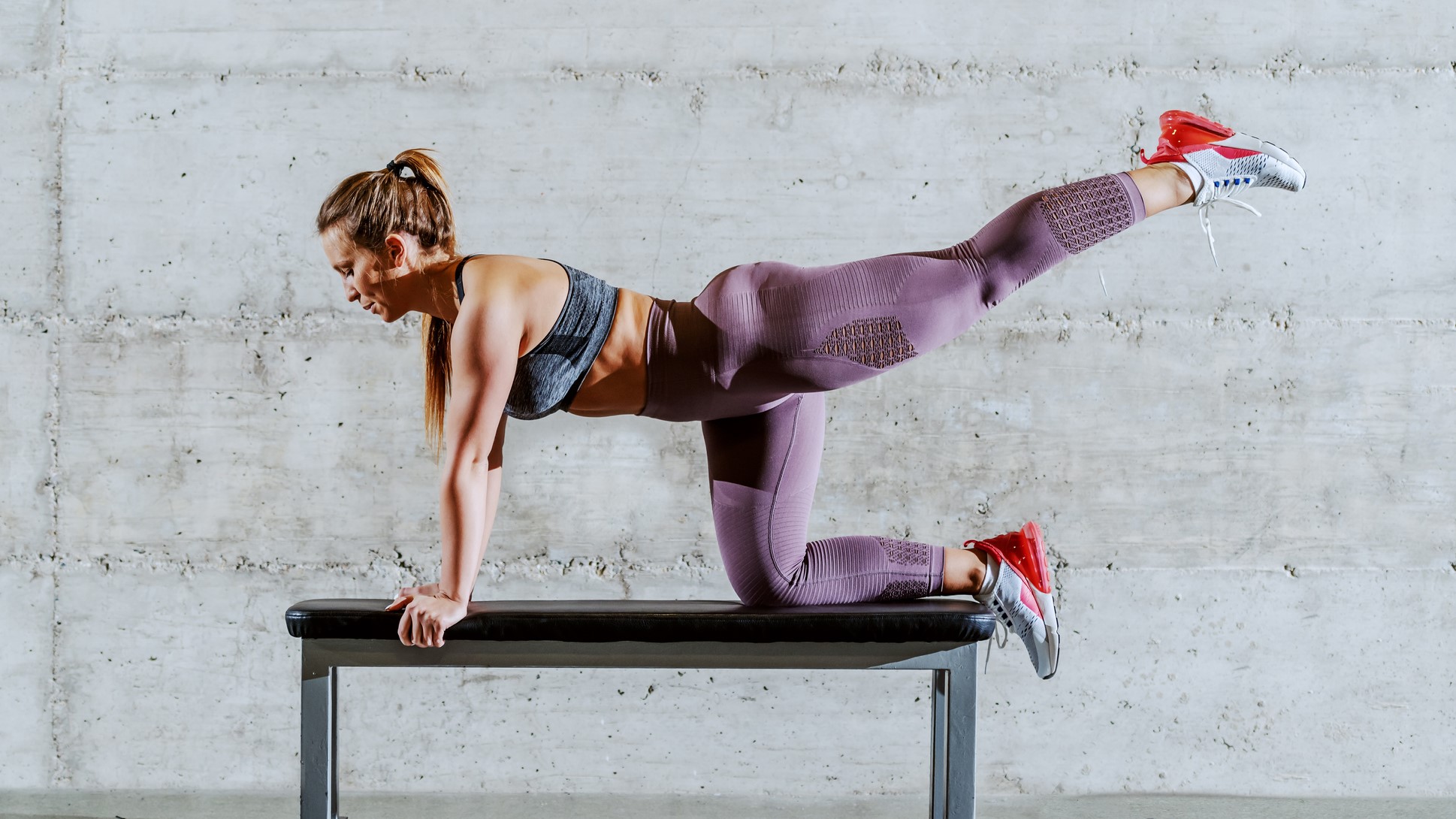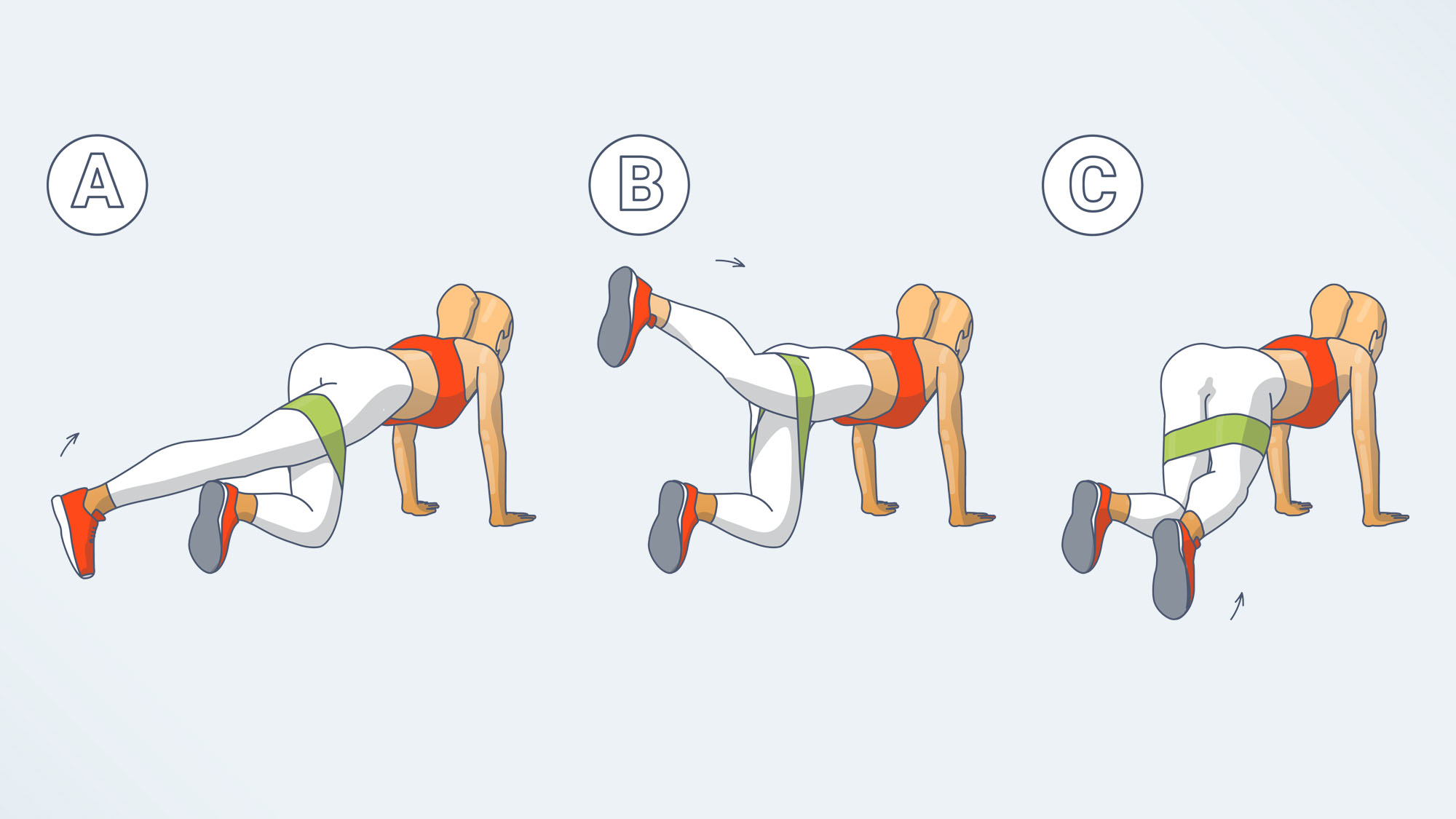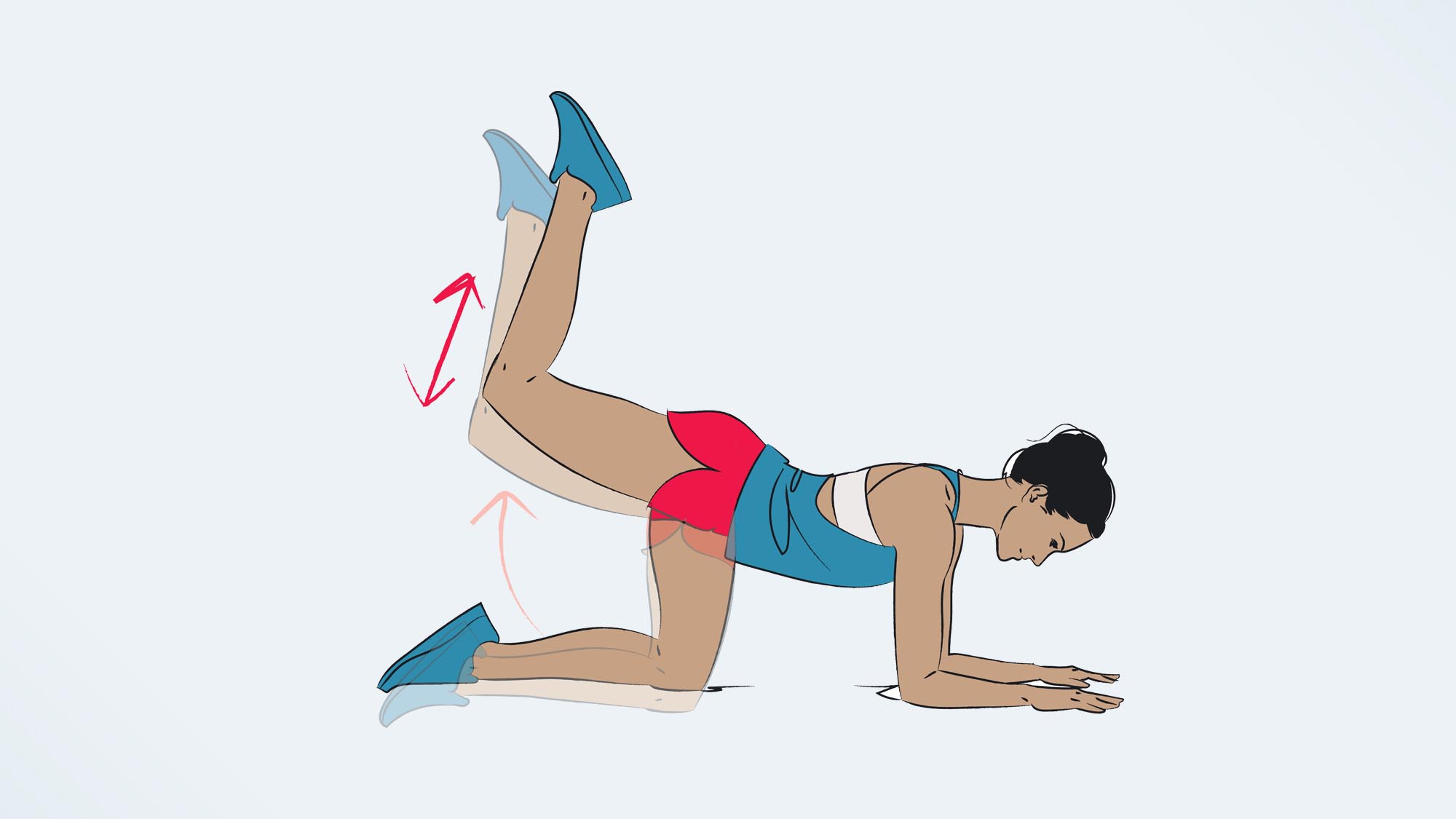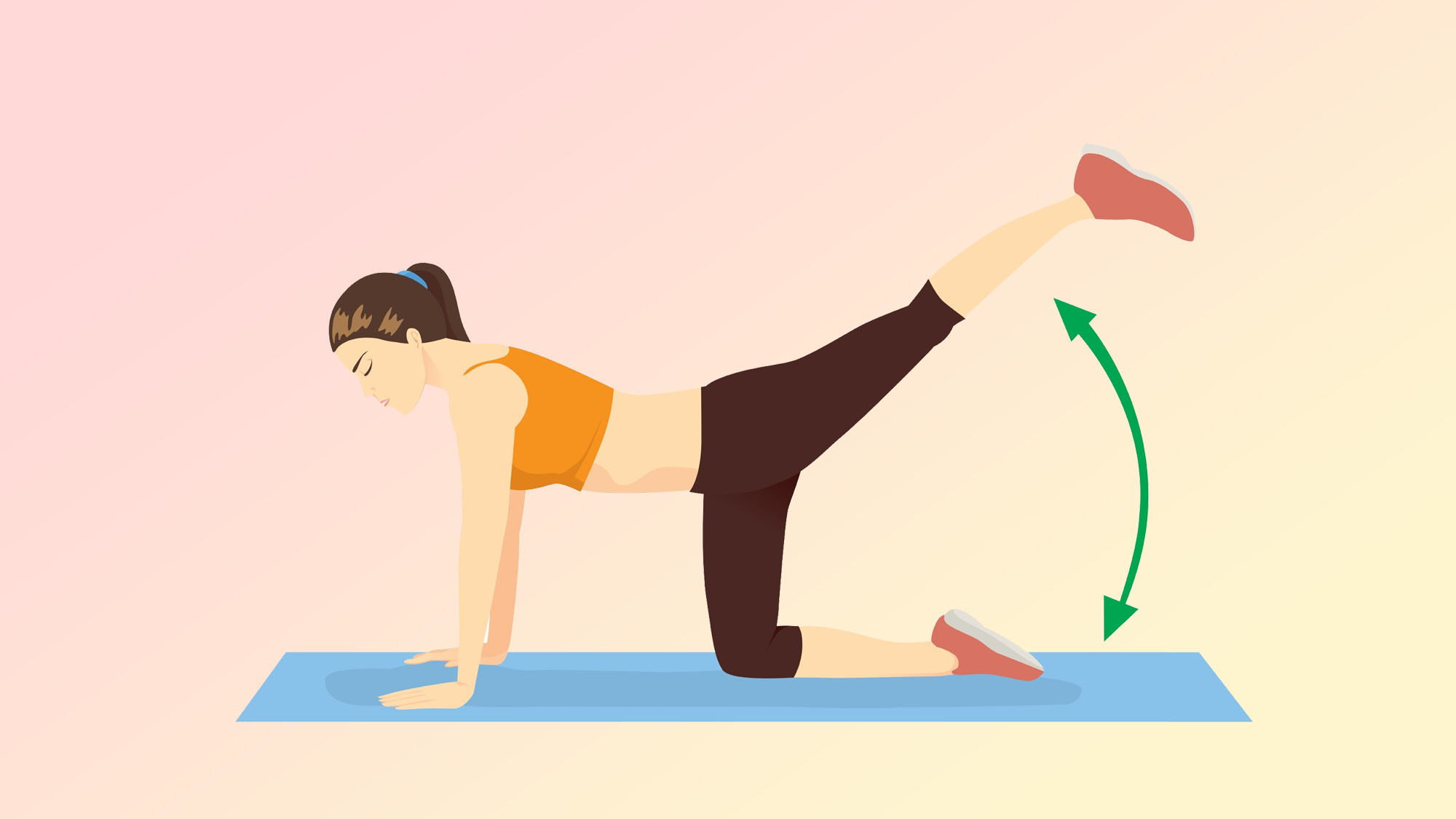This leg lift variation targets your glutes and inner thighs — here's how to do it

Forget weights, this simple leg lift variation works your glutes and inner thighs using just your bodyweight (or a set of the best resistance bands or best ankle weights if you’re looking to really up the ante).
The rainbow leg lift is a compound exercise that also targets the abdominal muscles, when done correctly. But how do you do the rainbow leg lift, what are the benefits, and how can you modify the exercise? Read on to find out more.
If you’re looking to sculpt and shape your glute muscles, rainbow leg lifts are an excellent place to start. Of course, no one exercise alone can work miracles, but this bodyweight move is a great way to isolate, and strengthen the glutes. In fact, it’s a go-to for Victoria’s Secret model, Adriana Lima, who was seen focusing on the move in a workout video filmed at Dogpound in New York City — the sweaty stomping ground of some of the world’s most famous faces.
A post shared by Kirk Myers (Keherjot Sing)€ (@kirkmyersfitness)
A photo posted by on
Rainbow leg lifts are suitable for all levels, and you could easily pair this one with one of these resistance band leg workouts for beginners, or use it as an activation exercise before lifting weights. Remember that strong glutes are far more than just an aesthetic goal — they can help you run faster, and lift heavier. As a reminder, if you’re new to exercise or you’re returning to exercise following an injury, it’s a good idea to check your form with a personal trainer before adding weights or reps.
How to do a rainbow leg lift

Ready to get started? Here’s how to do a rainbow leg lift:
- Start on all fours, with your wrists stacked underneath your shoulders, and your knees stacked underneath your hips.
- Keep your gaze down to the floor.
- Extend your left leg out and back behind you, as if you’re doing a leg extension or a donkey kick, but bring the extended leg to the left hand side.
- Engage your core, thinking about sucking your belly button into your spine, and squeeze your glutes as you raise your leg up and with a slow and controlled motion, take it up and round to the right side. Think about drawing a rainbow shape in the air with your left leg.
- Tap your left leg down to the side, before drawing your leg back over to the opposite side.
- Complete all your reps on one leg before switching sides.
To increase the intensity of the exercise, you can try doing the rainbow leg lifts on a box, or by putting a pair of ankle weights around your ankles, or a resistance band around your thighs.
What muscles does the rainbow leg lift target
When done with the correct form, the rainbow leg lift exercise targets the thighs, the glutes, the lower back and the abdominal muscles. It’s a good exercise for the adductor muscle in the inner thigh, but it’s also excellent at isolating the glutes, without putting too much strain on the quads and hamstrings.
Get instant access to breaking news, the hottest reviews, great deals and helpful tips.
There’s also a stability element to this exercise, as your core has to work hard to keep your body still as your leg moves. Remember to keep your core engaged as you lift and lower your leg.
This is also one to try if you spend a lot of time sitting down, as it activates muscles you wouldn’t normally target. Speaking of which, here’s the best exercises to do if you sit down all day.
What other leg lift variations can you try?
As mentioned above, to up the intensity of the exercise, try doing it on a box or bench, or adding ankle weights or a resistance band to the move. If this is too challenging, you’ll still all of the benefits using just your bodyweight.
Looking for other leg lift variations? Here’s some worth trying:
Donkey kicks

Start on all fours, with your knees stacked beneath your hips, and your hands beneath your shoulders. Make sure your back is flat — think about engaging your core, to prevent any arching in your lower back.
Engaging your core, keep a 90-degree bend in your knee, and lift your foot up toward the ceiling. Make sure you don’t lift your leg too high — your lower back should not start to arch, and your hips shouldn’t twist. Squeeze your glute at the top, before returning to your starting position, but don’t drop your knee back down to the floor.
That’s one rep. Complete all your reps on one leg before swapping to the other side. To make the exercise more challenging, you can add weights, either by holding a small dumbbell in the bend of your knee, or by using a set of the best ankle weights. Here’s what happened when our fitness editor did 100 donkey kicks a day for a week.
Leg extensions

To do a leg extension, start in the same all fours position. Make sure your back is flat — think about engaging your core, to prevent any arching in your lower back. Engaging your core, lift and extend one leg out behind you, pausing at the top to squeeze your glutes. Bring the leg back to your starting position, but don’t let your knee drop to the ground. Raise and straighten the leg again. Do all your reps on one leg before swapping sides.
Clamshells

To begin, lie on your right side, with your feet, legs, and hips stacked on top of each other and your knees bent at 45 degrees. Rest your head on your right arm (or prop yourself up and rest your head in your hand) and engage your core to help you maintain stability during the move.
Keeping your feet in contact with each other, raise your upper leg as high as you comfortably can without rocking your hips. Your lower leg should stay exactly where it is. Pause at the top of the move, then lower your leg back to the start position. That’s one rep. Aim for 30, then switch sides. Here’s what happened when this fitness writer did resistance band clamshells every day.
More from Tom's Guide
- I did 100 glute kickbacks a day for a week — here’s the results
- The best resistance bands for workouts
- Here's what happened when I did resistance band deadlifts for a week

Jane McGuire is Tom's Guide's Fitness editor, which means she looks after everything fitness related - from running gear to yoga mats. An avid runner, Jane has tested and reviewed fitness products for the past five years, so knows what to look for when finding a good running watch or a pair of shorts with pockets big enough for your smartphone. When she's not pounding the pavements, you'll find Jane striding round the Surrey Hills, taking far too many photos of her puppy.
